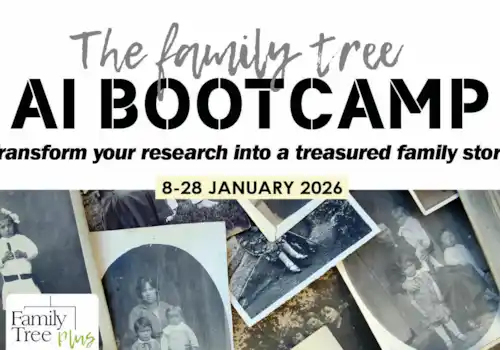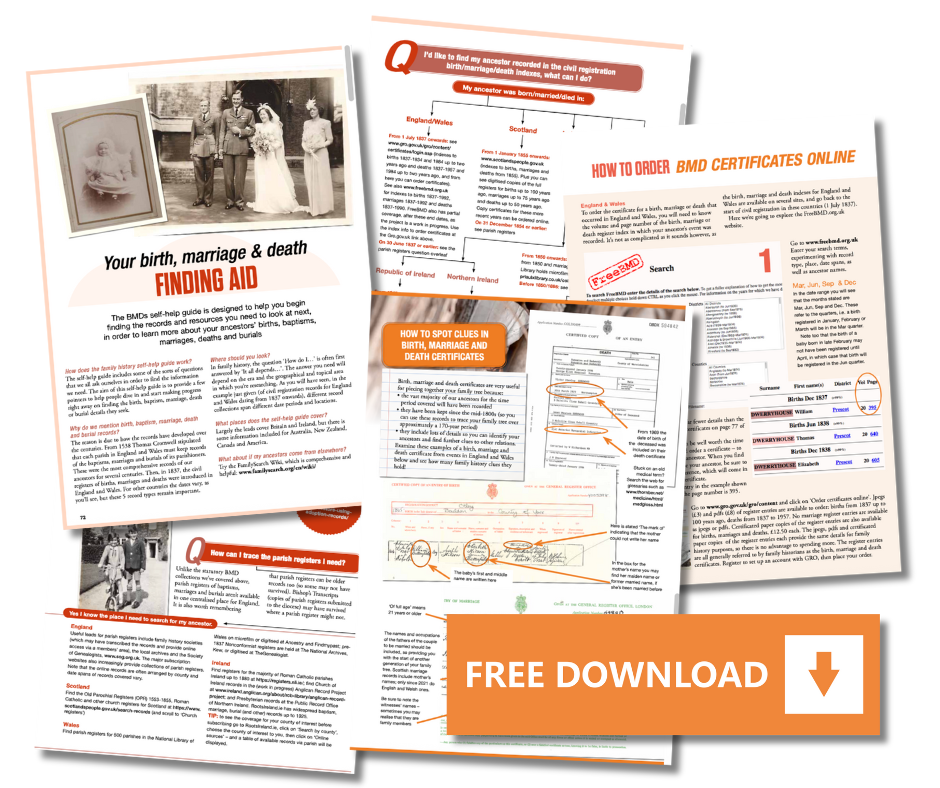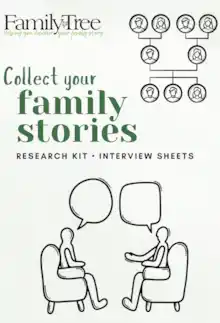Marriage records can reveal new generations, confirm family connections, and provide vital clues for building your family tree.
In this guide, we’ll explain how to use marriage certificates for genealogy, what information they contain, and where to find them for England, Wales, Scotland and Ireland. Whether you’re just starting out or looking to break down a brick wall, understanding how to make the most of marriage records is a key step in successful family history research.
By obtaining certificates from the General Register Office (GRO) for birth, marriage and deaths (BMD), you’ll obtain important dates and facts about your ancestor and can take your family tree back another generation by discovering other family members, as we show you here, an exploration of birth, marriage and death records.
Marriage records - quick links
The official civil registration of births, marriages and deaths in England and Wales began on 1 July 1837 (1 January 1855 for Scotland and 1 January 1864 for Ireland - and non-Roman Catholic marriages in Ireland had been recorded since 1845).
Here we'll be focusing on marriage records, but you can read the following articles to get more information on BMDs:
Before the introduction of the civil records, similar sorts of records had been kept by the church (these are known as parish registers, and largely cover baptisms, marriages and burials). However, there were increasingly concerns about the nature of this church record-keeping system. So it is in the Victorian era we see the state taking over the role of official registration of the births, marriages and deaths of the population.
The beginning of civil registration meant that the information collected about births, marriages and deaths was standardised and centralised, giving us, as family historians today, a much better chance of discovering information about our ancestors.
Read on to discover what information you can find out from marriage records.
An introduction to marriage certificates
A marriage certificate gives the date and place of marriage, name, occupation and residence of the bride and groom, and name and occupation of both fathers, and for marriages in Scotland the names of mothers too (mothers' names were only included for marriages in England and Wales from 2022).
Other information includes marital status (for example, bachelor/spinster or widower/widow) and the names of witnesses, who were often family members or friends. When searching for a marriage certificate, remember that not all marriages took place before the birth of a child.
The marriage indexes can tell you the following about your ancestor:
- First name and surname of the bride and groom
- Year the marriage was registered
- Quarter the marriages was registered (March, June, September or December)
- Name of the registration district
- Volume and page number
These are all very useful for helping to pinpoint your ancestors’ marriage so that you can order the marriage certificate.
Your quick video guide to marriage certificates
Helen from Family Tree gives us a 60-second introduction to using marriage records for family history…
"Here we have a typical marriage certificate from the Victorian era. It gives us the names of the bride and groom, and sometimes their ages. If it says 'of full age,' that means they were over 21; sometimes you get the precise ages – for example, 24 and 25. We can also see their marital status, such as bachelor or spinster, which confirms they hadn’t been married before.
"The certificate also records occupations – here we can see the groom’s job, which helps us build a picture of who these people were. But the document gets even more interesting because it also tells us about the generation above. With just this one record, we can learn about the fathers of both the bride and the groom, along with their occupations. That’s two generations of family history from a single certificate.
"And lastly, never forget the witnesses. They are often relatives, and their names can provide valuable extra clues for your research."
Marriage certificates for England & Wales
The cheapest website to buy a copy of an English or Welsh marriage from is the official government website.
The main body of the certificate as it was introduced in 1837 in England and Wales has remained unchanged to this day. It is identical in content wherever the marriage took place; exactly the same forms are used by the C of E, Protestant Nonconformists, Roman Catholics, Jews and Quakers and indeed by the local registration service for civil ceremonies.
The wording at the top and towards the bottom of the certificate varies slightly depending on the denomination and tells you where, how and by whom the marriage ceremony was performed.
The information on an English or Welsh marriage certificate includes:
- When married
- Name and surname of bride and groom
- Age
- Condition (marital status)
- Rank or profession
- Residence at the time of marriage
- Fathers’ names
- Rank or profession of fathers
- Names of witnesses
Marriage certificates for Scotland
Registration of marriages in Scotland began on 1 January 1855 and, as with the associated records of births and deaths, the amount of information recorded is far greater than in England and Wales. In that golden first year of registration, the birthplaces of the bride and groom were recorded as well as the number of former marriages and the number of children from those marriages.
These details were dropped from 1856 but the registers still continued to record the names of both parents, including the maiden names of the mothers. Visit ScotlandsPeople website for more information.
Marriage certificates for Ireland
Registration of all non-Roman Catholic marriages commenced on 1 April 1845 but all other marriages weren’t recorded by the state until 1 January 1864, when the full general registration system came into force.
For the Republic of Ireland order certificates here and for Northern Ireland click here.
Claim your free BMD guide
Sign up to receive the Family Tree newsletter and we'll send you our free 'Birth Marriage and Death Guide' featuring:
- Your handy BMD finding aid (including finding records in the United Kingdom, Ireland, Australia, Canada, New Zealand, the USA)
- How to find clues on BMD records
- Your in-depth guide to ordering BMD records
You'll also receive our friendly, fun, and informative weekly email packed with expert tips, advice and special offers.
Sign up now








